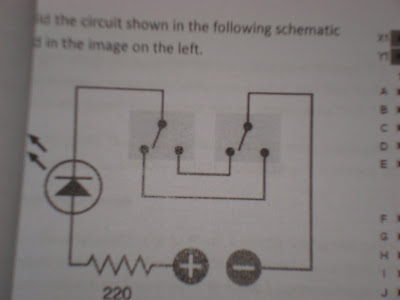Thursday's Class was dedicated to illustrating the benefits provided by rotation sensors, and how they improve the accuracy of open loop navigation. The above video is my attempt to navigate a maze made out of black tape using a vex robot... while popping a wheelie.
As you can see, I did not get anywhere close to the target of completing the maze. The reasons for this include the considerable slippage of the tires due to the high power levels, and the difficulty of making precise turns when the robot is in the wheelie position.
After the first attempt at the maze, we were asigned our project teams, and were set to work on using sensor data to improve the accuracy of our robot's performance. The rotation sensors allowed us to make estimates of how far the robot had traveled based on its feedback. As you can see from the following video, a more controlled path through the maze was made possible by these sensors.
(Video to be posted once converted)











 The basic model, with one LED, has a default condition of a dim LED when it is connected to power and ground. When it probes a high voltage location the light gets brighter, when it probes a ground location it turns off.
The basic model, with one LED, has a default condition of a dim LED when it is connected to power and ground. When it probes a high voltage location the light gets brighter, when it probes a ground location it turns off. 


 When current is applied to the electromagnet and capacitor in paralell some of the current goes into the electromagnet, and some goes into the capacitor. While the capacitor is charging, the majority of the current travels through the electromagnet. When the capacitor discharges, the current breifly ceases to travel through the electromagnet which causes the switch inside the relay to relax to its default state. The capacitor then begins to charge again, which causes current to flow through the magnet and change the switch's position. This process continues as long as there is current in the circut.
When current is applied to the electromagnet and capacitor in paralell some of the current goes into the electromagnet, and some goes into the capacitor. While the capacitor is charging, the majority of the current travels through the electromagnet. When the capacitor discharges, the current breifly ceases to travel through the electromagnet which causes the switch inside the relay to relax to its default state. The capacitor then begins to charge again, which causes current to flow through the magnet and change the switch's position. This process continues as long as there is current in the circut.



